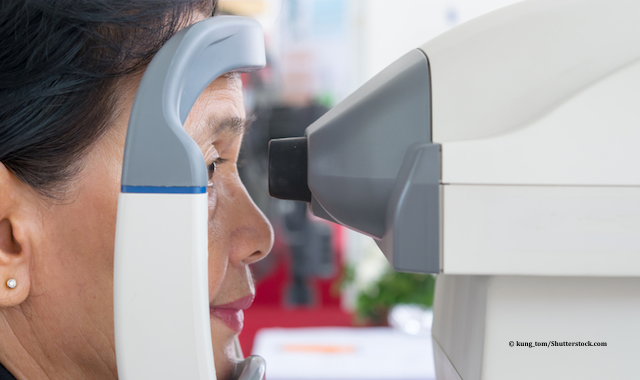Involve patients in monitoring IOP
Monitoring and measuring a glaucoma patient's intraocular pressure can be challenging with patients' busy schedules. Optometry Times Chief Optometric Editor Benjamin P. Casella, OD, FAAO, gives his reasons why home tonometry can help drive a treatment partnership between doctor and patient.


I do not own a smartwatch. However, I do understand the appeal of one. Along with checking your email and telling time simultaneously, smartwatches have the capacity to readily access health data.
Everyone is counting his steps these days, and smart devices now typically come equipped with programs to log an individual’s health metrics.
Where does eye health fit into this?
It has been opined recently that glaucoma patients may want to measure their intraocular pressure (IOP) at home as do diabetic patients with blood glucose levels and hypertension patients with blood pressure.1 This concept of home tonometry has been discussed for several years and has several implications.
Previously from Dr. Casella: How MIGS are changing glaucoma treatment
Researchers recently compared self-monitoring of IOP with the Icare Home tonometer to in-office Goldmann applanation tonometry and rebound tonometry performed by an investigator.2
Research methodology
Eyes of 100 patients with glaucoma or ocular hypertension were included in the study. Patients underwent Goldmann applanation tonometry and rebound tonometry by a masked investigator. Patients were also instructed on performing rebound tonometry on themselves.
Related: New technology helps IOP measurement
Eye measurements were performed under the observation of the investigators. Using the same device, successful measurement was defined as being within 5 mm Hg of the investigator’s measurement. Patients completed a post-exam questionnaire about their experiences.
Must monitor IOP all day
The limit of successful patient-measured tonometry being defined as within 5 mm Hg of an investigator’s measurement was a seemingly wide variation pf magnitude. In the arena of normal tension glaucoma, a differential of 5 mm Hg could easily account for 25 to 30 percent of one’s IOP-and that is a large value.
The concept of this study points to several advantages of in-home tonometry, and we will likely see more, larger studies of this nature as proprietary devices hit the market.
From a diagnostic standpoint, more information would be preferred from reliable and accurate home tonometry than from a single measurement in the OD’s office. The current concept of serial tonometry typically involves several office visits spaced evenly throughout the day. Even with several readings per day, if a patient’s IOP is at its peak outside of clinic hours, then a patient’s highest pressures are being missed.
Having access to a patient’s IOP upon first waking could yield useful diagnostic information when the decision to treat has been made.

Efficacy of glaucoma treatment could be better quantified with reliable and accurate IOP assessment throughout the day. Patient’s diurnal curve pre- and postinitiation of treatment could be assessed more accurately over a shorter time period.
Related: Helping patients better understand glaucoma
Give patients more control
The patient taking an active role in the management of his condition may increase compliance by promoting the doctor-patient relationship as more of a team effort.
Several approaches can be taken in the quest to better understand a patient’s IOP throughout the day. This includes not scheduling a patient for a follow-up visit at the same time as his previous appointment.
Because a patient’s IOP is higher in the morning as compared to the afternoon, scheduling patient visits at different times of day could mean the difference between simply monitoring for change in the future or initiating treatment. Once treatment has been initiated, the patient’s periodic visits can be spaced out at different timepoints in order to gain a feel for efficacy of treatment.
I look forward to continuing the conversation of patient-performed tonometry. Engaging patients in a new way and gaining better access to diurnal IOP could provide for better outcomes.
References
1. Muir KW. Home Tonometry-Can We? Should We? JAMA Ophthalmol. 2017;135(10):1036.
2. Pronin S, Brown L, Megaw R, Tatham AJ. Measurement of Intraocular Pressure by Patients With Glaucoma. JAMA Ophthalmol. 2017 Oct 1;135(10):1036.
Newsletter
Want more insights like this? Subscribe to Optometry Times and get clinical pearls and practice tips delivered straight to your inbox.




.png&w=3840&q=75)











